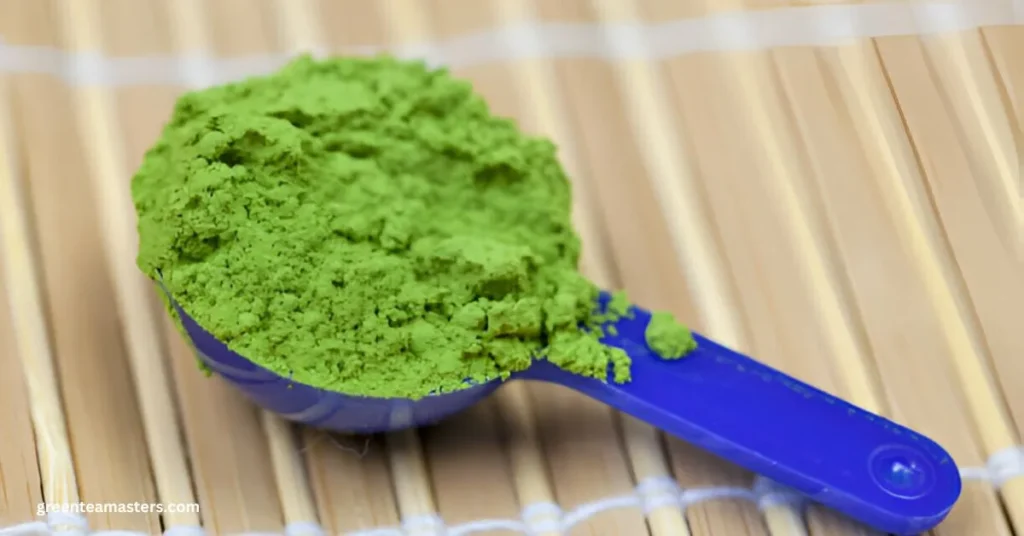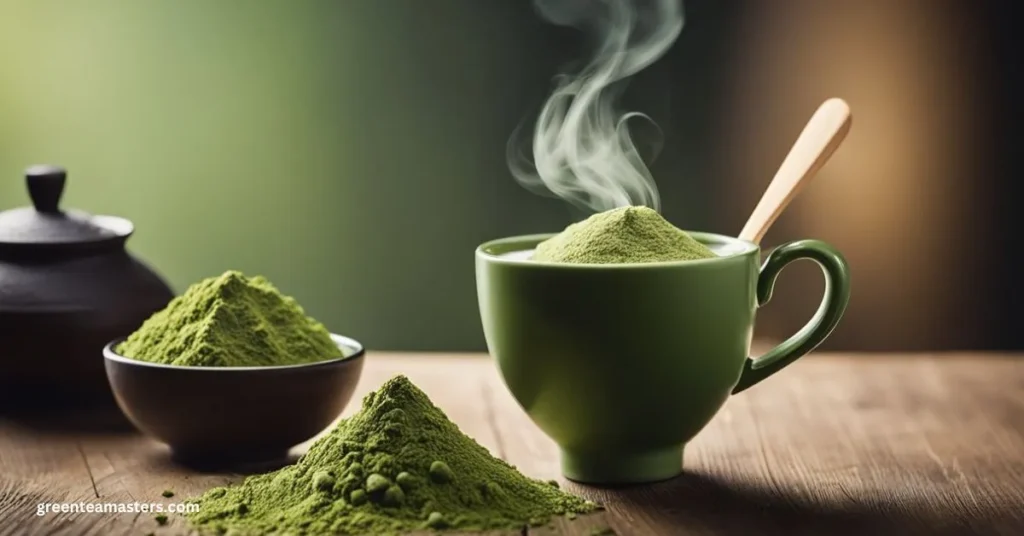Matcha green tea has become increasingly popular in recent years due to its unique flavor and numerous health benefits. However, for individuals with histamine intolerance, consuming certain foods and beverages can lead to uncomfortable symptoms such as hives, itching, and digestive issues. Therefore, it is important to understand whether matcha green tea is high in histamine.
Histamine is a compound that is naturally produced by the body and is involved in various physiological processes. However, some individuals may have a histamine intolerance, which means that their bodies are unable to properly break down histamine, leading to an excess of histamine in the body. This can cause a variety of symptoms, including skin rashes, headaches, and gastrointestinal issues. Therefore, individuals with histamine intolerance must be careful about the foods and beverages they consume to avoid triggering these symptoms.
While matcha green tea is made from the same plant as other types of tea, it is processed differently, which may affect its histamine content. Green tea is generally considered to be lower in histamine than black tea, as it is less fermented. However, it is unclear whether matcha green tea has a similar histamine content to regular green tea or if its processing method affects matcha histamine levels.
What is Matcha Green Tea?
Matcha green tea is a type of green tea that has been consumed in Japan for centuries. It is made from shade-grown tea leaves that are ground into a fine powder. Matcha is known for its vibrant green color and unique taste. It is often used in traditional Japanese tea ceremonies and is becoming increasingly popular in the Western world.
Origins and Production
Matcha green tea has its origins in China, where it was first produced during the Tang Dynasty (618-907 CE). It was later introduced to Japan by a Buddhist monk named Eisai in the 12th century. Eisai is credited with popularizing the consumption of green tea in Japan and is also known for his contributions to Zen Buddhism.
Matcha is made from tea leaves that are grown in the shade for several weeks before they are harvested. This process increases the chlorophyll content of the leaves, giving them their vibrant green color. After the leaves are harvested, they are steamed, dried, and ground into a fine powder using a stone mill.
Nutritional Profile
Matcha green tea is known for its high antioxidant content. It contains a type of antioxidant called catechins, which are believed to have a number of health benefits. Matcha is also a good source of caffeine, which can help improve mental alertness and focus.
One serving of matcha green tea (about 1 teaspoon of powder) contains approximately:

- 3 calories
- 0.5 grams of protein
- 0.5 grams of carbohydrates
- 0.1 grams of fat
Matcha green tea is also a good source of vitamins and minerals, including vitamin C, vitamin A, potassium, and calcium.
Histamine in Foods
What is Histamine?
Histamine is a chemical compound that is naturally produced by the body’s immune system as a response to allergens, injuries, and infections. It is also present in certain foods, especially those that are fermented or aged. Histamine plays a vital role in the body, but excessive amounts can cause various symptoms, such as headaches, hives, and digestive problems.
Foods High in Histamine
Some foods contain higher levels of histamine than others. Fermented foods such as sauerkraut, kefir, and kimchi are high in histamine. Aged cheese, smoked fish, and cured meats are also high in histamine. In addition, certain fruits and vegetables, such as strawberries, citrus fruits, and tomatoes, can trigger the release of histamine in the body.
When it comes to tea, green tea is generally considered to be lower in histamine than black tea. Matcha, which is made from finely ground green tea leaves, is also considered to be lower in histamine. However, it is important to note that the histamine content of tea can vary depending on how it is processed and stored.
In conclusion, histamine is a chemical compound that is naturally produced by the body’s immune system and found in certain foods. Fermented and aged foods, as well as certain fruits and vegetables, are high in histamine. Green tea and matcha are generally considered to be lower in histamine than black tea, but their histamine content can vary depending on how they are processed and stored.
Matcha Green Tea and Histamine Content

Matcha green tea is a popular beverage that is enjoyed for its unique taste and health benefits. However, for individuals with histamine intolerance, it is important to consider the histamine content in foods and beverages, including matcha green tea.
According to a study by the “Histamine Doctor” website, matcha green tea has a moderate amount of caffeine, with between 38-176 mg per serving. Caffeine is a known trigger for histamine release in some individuals, so it is important to be cautious when consuming caffeinated beverages.
When it comes to histamine content, green tea is generally considered to be low in histamine. This is good news for individuals with histamine intolerance who want to include green tea in their diet. However, it is important to note that the histamine levels in green tea can vary depending on factors such as the quality of the tea leaves, how the tea is processed, and how it is stored.
In general, matcha green tea is considered to be low in histamine, but it is always a good idea to monitor your own individual response to the beverage. If you are unsure about whether matcha green tea is safe for you to consume, it is recommended to speak with a healthcare professional or a registered dietitian who can provide personalized recommendations based on your individual needs and health history.
Read More Is Matcha Green Tea Good for Diabetics
Health Implications of Histamine in Matcha
Matcha green tea is a popular beverage that has been consumed for centuries in Japan and other parts of the world. It is made from the leaves of the Camellia sinensis plant, which are ground into a fine powder. Matcha is known for its high content of antioxidants and other beneficial compounds, but some people wonder whether it is high in histamine.
Potential Benefits
Matcha contains a variety of compounds that have been shown to have anti-inflammatory and antioxidant properties. For example, it is rich in polyphenols, which are plant-based compounds that have been linked to a reduced risk of chronic diseases such as cancer and heart disease. Matcha also contains caffeine, which can help to increase alertness and improve cognitive function.
Considerations for Histamine Intolerance
Histamine is a naturally occurring compound that is found in many foods, including fermented foods, aged cheeses, and cured meats. Some people are sensitive to histamine and may experience symptoms such as headaches, hives, and digestive issues when they consume foods that are high in histamine.
While matcha is not particularly high in histamine, it does contain some histamine-releasing compounds, such as caffeine and theanine. As a result, people with histamine intolerance may want to limit their consumption of matcha or avoid it altogether.
It is important to note that histamine intolerance is a complex condition that can be difficult to diagnose. If you suspect that you may have histamine intolerance, it is important to work with a healthcare professional to determine the underlying cause and develop an appropriate treatment plan.
Overall, matcha green tea can be a healthy addition to a balanced diet. However, people with histamine intolerance may want to exercise caution when consuming matcha or other foods that contain histamine-releasing compounds.
Frequently Asked Questions
Can individuals be allergic to matcha without having a reaction to other types of green tea?
Yes, it is possible for individuals to be allergic to matcha without having a reaction to other types of green tea. Matcha is made from the leaves of the Camellia sinensis plant, which is the same plant used to make other types of green tea. However, matcha is grown and processed differently than other green teas, which can result in differences in the components that trigger allergic reactions.
What are common symptoms of a matcha tea allergy?
Common symptoms of a matcha tea allergy include hives, itching, swelling, difficulty breathing, and anaphylaxis. These symptoms can occur immediately after consuming matcha or can develop gradually over time. It is important to seek medical attention if any symptoms of an allergic reaction occur after consuming matcha.
Which types of tea are considered low in histamine content?
Green tea and white tea are generally considered to be low in histamine content compared to black tea and other fermented teas. This is because green and white teas are less oxidized and fermented than other types of tea, which can increase their histamine content.
Is there a connection between matcha consumption and increased inflammation?
While matcha is known for its anti-inflammatory properties, there is some evidence to suggest that excessive consumption of matcha can lead to increased inflammation in certain individuals. This is because matcha contains high levels of catechins, which can have pro-inflammatory effects in some people. However, more research is needed to fully understand the relationship between matcha consumption and inflammation.
Who may need to avoid consuming matcha green tea for health reasons?
Individuals with a known allergy to matcha or other green teas should avoid consuming matcha. Additionally, individuals with histamine intolerance or other conditions that are aggravated by histamine may need to limit or avoid consuming matcha.
What are the best alternatives to matcha for those with histamine intolerance?
Some good alternatives to matcha for those with histamine intolerance include white tea, green tea, and herbal teas such as peppermint tea or chamomile tea. It is important to choose teas that are low in histamine content and to monitor any symptoms that may occur after consuming these teas.


2 thoughts on “Is Matcha Green Tea High in Histamine?”